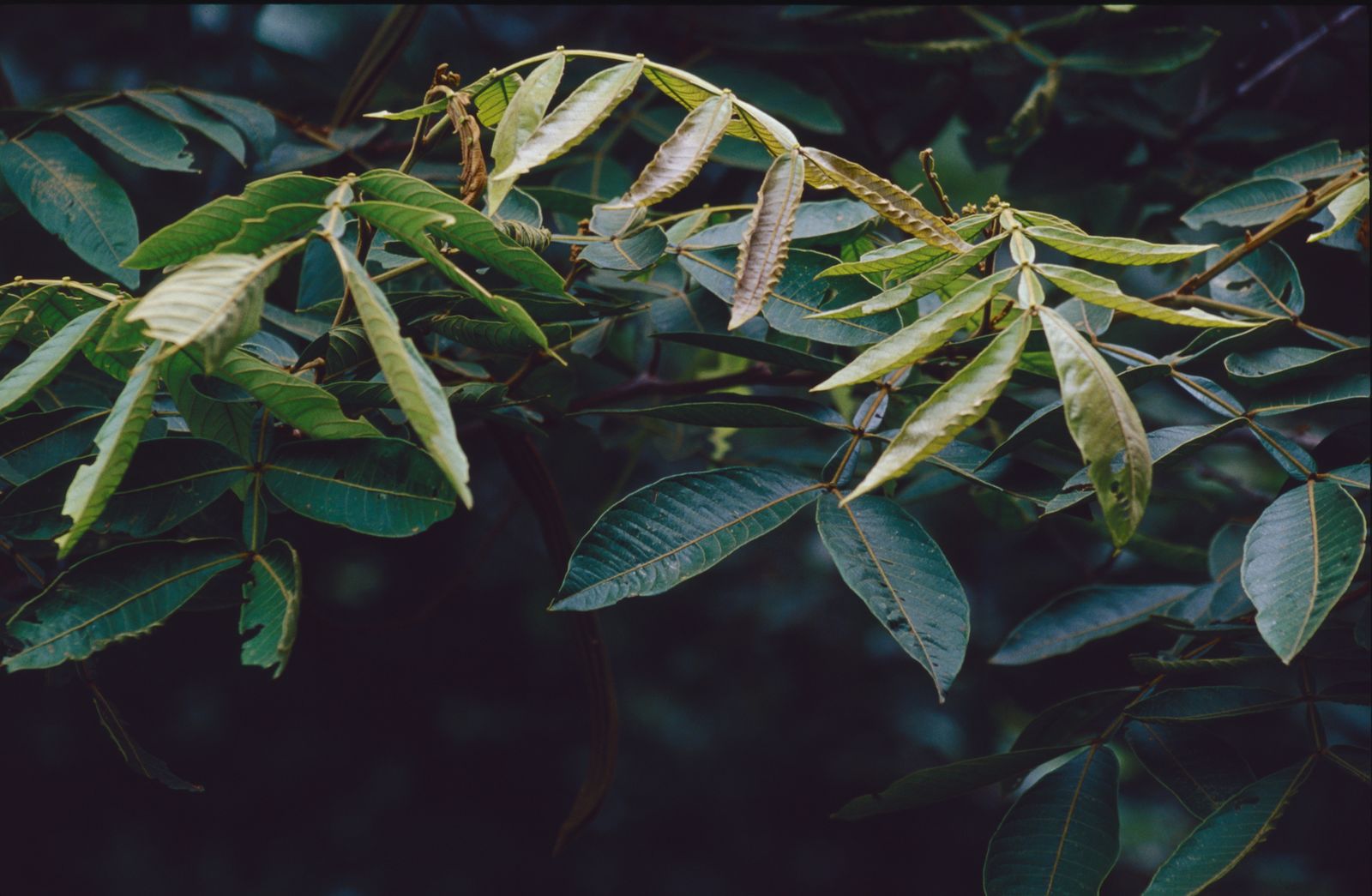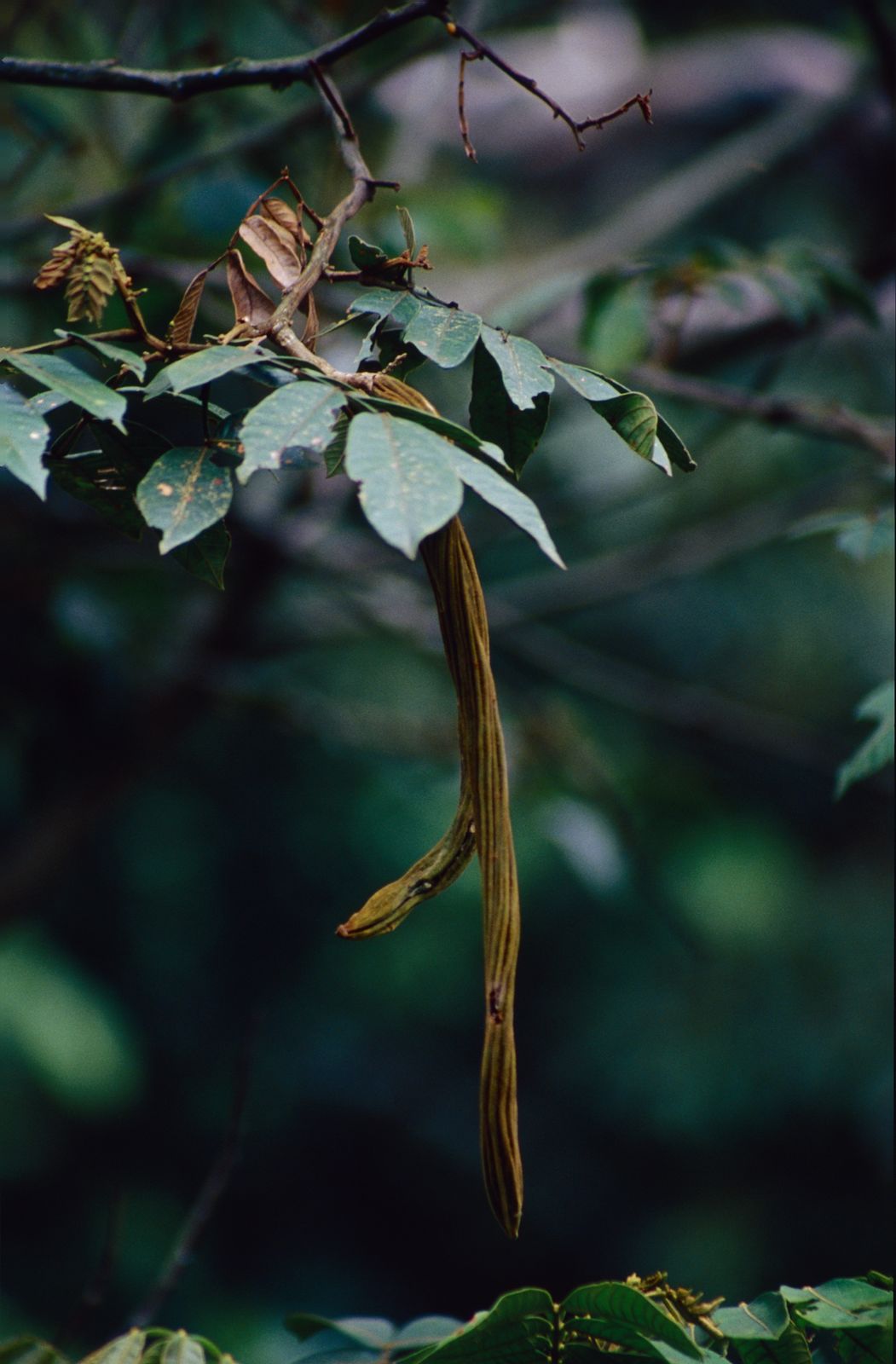Ice Cream Bean
inga edulis
Also known as: ["Ice Cream Bean","Inga Edulis","Mucurunga","Guama"]
Overview
A tropical leguminous tree known for its sweet, fibrous fruit pulp that encases seeds, native to South and Central America.
Benefits & Perks
["edible fruits","wildlife attractant (bees, butterflies, birds)","drought tolerant"]
Botanical Classification
| Phylum: | Magnoliophyta |
| Class: | Magnoliopsida |
| Order: | Fabales |
| Family: | Fabaceae |
| Genus: | Inga |
| Botanical Name: | Inga edulis |
Plant Characteristics
Basic Information
- Category: Trees
- Suitable Location: tropical or subtropical garden, sheltered from strong winds
- Suitable For:
- Is Weed: No
- Allergenicity: low
Environmental Needs
- Climate: {"temperatureRange":"15–30°C"}
- Hardiness: {"zones":"9–11"}
- Misting: rarely required, only if ambient humidity is very low
- Drainage: Moderately well-draining; avoid heavy clay soils.
- Soil Type: Rich, loamy soil with good organic matter; well-draining but moisture-retentive.
Maintenance Level
- Maintenance Level: moderate
- Toughness Level: moderate
- Pruning Frequency: Annually in late winter or early spring before new growth begins.
- Pruning Intensity: Moderate; remove up to one-third of old growth to rejuvenate the plant.
Care Details
Ideal Sunlight Coverage:
Full sun to partial shade; 6–8 hours of direct sunlight daily, with some afternoon shade in hot climates.
Sunlight Tolerance Tips:
Acclimate plants gradually to intense sunlight; protect from harsh afternoon sun; adjust placement based on seasonal light changes.
Care Requirements
Care Difficulty
moderatemoderate
Sunlight
partial shade to full sun
Use shade cloth in extreme heat; rotate plants for even light exposure; monitor for sunburn.
Watering
every 7–10 days during active growth, reduce in winter
Water thoroughly but infrequently; ensure soil dries slightly between waterings; avoid waterlogging.
Soil
well-draining, fertile loam with organic matter
pH: Slightly acidic to neutral (pH 6.0–7.0).
Ensure good aeration; avoid compacted soil; maintain consistent moisture.
Temperature
Thrives in warm tropical climates; ideal range 20–30°C (68–86°F); sensitive to frost.
Avoid sudden temperature changes; protect from frost; ensure good air circulation in hot weather.
Fertilizing
every 4–6 weeks during growing season with balanced fertilizer
Fertilize less in winter; avoid over-fertilizing to prevent root burn; apply to moist soil.
Propagation
Methods
Stem cuttings or seeds; stem cuttings are more reliable for home growers.
Step-by-Step Propagation Guide
- Take a 10–15 cm cutting.
- Remove lower leaves.
- Apply rooting hormone.
- Plant in medium.
- Maintain humidity.
Best Time: Spring or early summer when the plant is actively growing.
Environment
High humidity (70–80%), warm temperatures (24–28°C), and indirect light.
Medium
Well-draining mix of perlite and peat moss or cactus mix.
Hormone
Rooting hormone is recommended to improve success rates.
Timeline
Roots develop in 4–6 weeks; new growth appears in 2–3 months.
Tools Needed
Pruning shears, rooting hormone, small pots, humidity dome, misting spray bottle.
Quick Tips
Use healthy, non-flowering stems; keep soil consistently moist; provide bottom heat for faster rooting.
Pruning & Repotting
Pruning Guide
Method
Use clean cuts just above a bud or branch junction; avoid leaving stubs.
Pruning Plan
Prune to shape the plant, encourage branching, and remove dead or diseased wood.
Tools
Pruning shears, loppers, disinfectant (e.g., rubbing alcohol), gloves.
Checklist
Disinfect tools; prune during dormancy; remove dead/diseased wood; shape evenly.
Repotting Guide
Best Season
Early spring before active growth starts.
Pot Size
Increase pot size by 2–5 cm (1–2 inches) in diameter.
Method
Remove plant gently; trim roots if needed; place in new pot with fresh soil; water lightly.
Suggestions
Repot every 2–3 years or when roots fill the container; necessary to refresh soil and provide space.
Checklist
Choose appropriate pot; prepare new soil mix; handle roots carefully; water after repotting.
Advanced Care Tips
Watering Mastery
Watering Checklist
Check soil moisture before watering; water deeply; ensure drainage; adjust for season.
How to Apply Water Properly
Water at the base of the plant, ensuring moisture reaches the root zone. Water early in the morning to minimize evaporation and fungal growth. Allow excess water to drain away.
Watering Schedule Tips
Water deeply once a week during the growing season; reduce frequency in winter to prevent root rot. Adjust based on rainfall and soil moisture.
Soil Improvement
Add compost or well-rotted manure for fertility; mix in perlite or sand for drainage.
Temperature Stress Management
Signs of Temperature Issues
Chlorosis, leaf drop, stunted growth, or bud abortion in cold; wilting, scorching, or leaf burn in excessive heat.
Cold Stress
Low temperatures slow growth, cause leaf drop, and can lead to frost damage or death.
Solution: Protect with frost cloth or move to a warmer location; avoid sudden temperature drops; mulch to insulate roots.
Hot Stress
Excessive heat can cause leaf scorch, wilting, and reduced flowering or fruiting.
Solution: Provide shade during peak heat; increase watering; use mulch to retain soil moisture.
Fertilizing Guide
Fertilizing Checklist
Use balanced fertilizer; apply during growing season; avoid contact with roots; water after application.
Fertilizing Method
Use a balanced, slow-release fertilizer in spring and summer; dilute liquid fertilizer to half-strength monthly during active growth.
Common Problems & Solutions
Toxicity Warning
Cats
Non-toxicInga edulis is not considered toxic to cats. The fruit and seeds are safe for feline consumption in moderation.
⚡ Toxic If:
None
Dogs
Non-toxicInga edulis is not considered toxic to dogs. The fruit and seeds are safe for canine consumption in moderation.
⚡ Toxic If:
None
Humans
Non-toxicInga edulis, commonly known as ice-cream bean, is generally considered non-toxic to humans. The plant is widely consumed for its sweet, fibrous fruit pulp and seeds, which are a staple food in many tropical regions.
⚡ Toxic If:
None
Frequently Asked Questions
Q: Is Inga edulis safe for pets?
A: Yes, it is non-toxic to dogs and cats.
Q: What are the uses of Inga edulis?
A: The fruit pulp is edible and sweet, while the tree also provides shade and attracts wildlife.
Q: How tall does Inga edulis grow?
A: It can grow up to 15-25 meters tall in ideal conditions.
Quick Reference
| Family: | Fabaceae |
| Care: | moderate |
| Light: | partial shade to full sun |
| Water: | every 7–10 days during activ |
Get Expert Care Tips
Download the Plantious app for personalized care reminders and plant identification!
Google Play App Store








